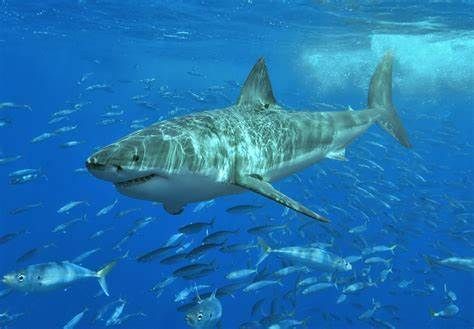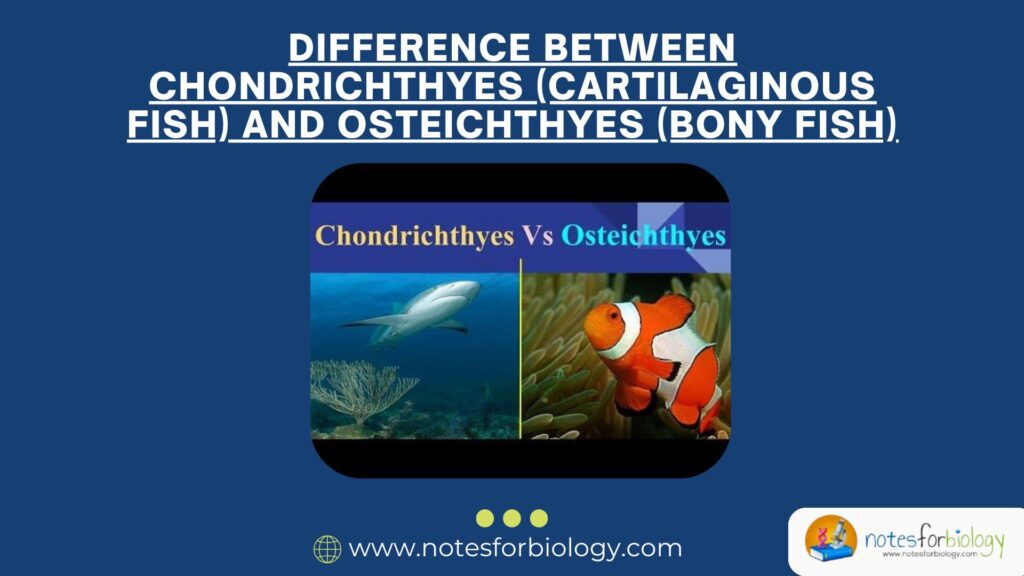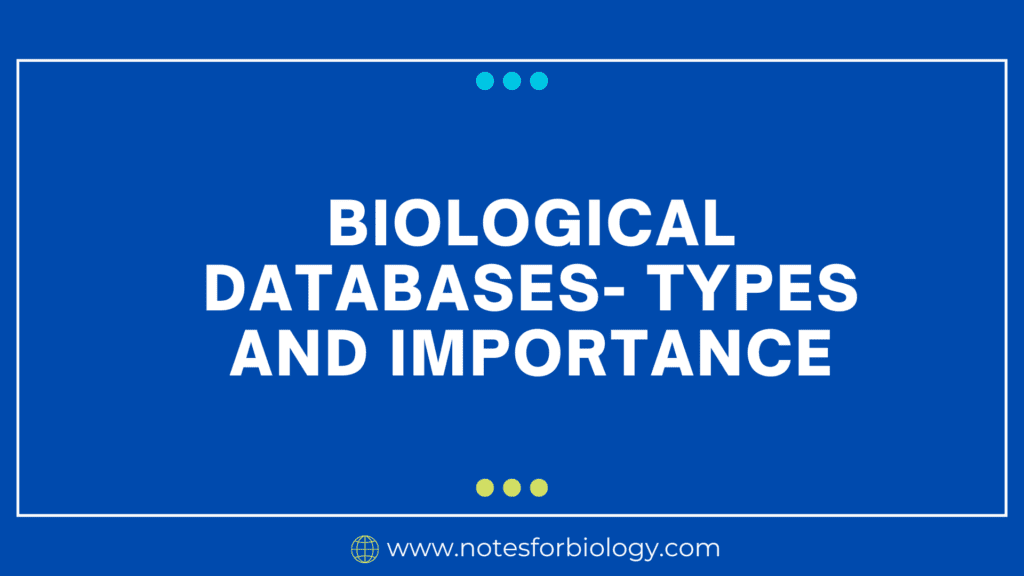Introduction
Chondrichthyes and Osteichthyes are two major classes of fish, where Chondrichthyes are cartilaginous fish with skeletons made of cartilage (like sharks and rays), and Osteichthyes are bony fish with skeletons made of bone (like salmon and goldfish).
Fish are among the most fascinating creatures on Earth. They come in all shapes, sizes, and colors, and live in nearly every body of water from tiny freshwater streams to the deep, dark ocean. But not all fish are the same. Scientists classify fish into different groups based on their body structure, and the two main classes are:
- Chondrichthyes – also called cartilaginous fish
- Osteichthyes – also called bony fish
These two groups have been living in Earth’s waters for hundreds of millions of years, and while they might look similar on the outside, they are built quite differently on the inside. In this guide, we’ll explore the differences between Chondrichthyes and Osteichthyes in a simple, and understandable way.
Table of Contents
What Are Chondrichthyes?
Chondrichthyes are fish whose skeletons are made of cartilage, not bone. Cartilage is the same flexible material that makes up our ears and nose.

Examples:
- Sharks
- Rays
- Skates
- Sawfish
These fish have been around for over 400 million years, and their bodies are built for speed, stealth, and survival. Sharks, for instance, are powerful predators, while rays glide gracefully through the sea floor like underwater birds.
What Are Osteichthyes?
Osteichthyes are fish that have a skeleton made mostly of bone. They are the largest class of vertebrates (animals with backbones), with over 30,000 known species!

Examples:
- Salmon
- Goldfish
- Tuna
- Catfish
- Seahorses
Bony fish are found in both freshwater and saltwater, and they come in many forms—from tiny colorful aquarium fish to huge ocean swimmers.
Similarities between Chondrichthyes and Osteichthyes
The similarities between Chondrichthyes and Osteichthyes are discussed below.
1.Both are vertebrates – They have a backbone and belong to the phylum Chordata.
2.Chondrichthyes and Osteichthyes both live in aquatic environments – Found in oceans, seas, and in the case of Osteichthyes, also in freshwater.
3.Chondrichthyes and Osteichthyes both have paired fins – Used for swimming, balance, and steering.
4.Chondrichthyes and Osteichthyes both breathe using gills – They extract oxygen from water.
5.Both reproduce sexually – Though the method of fertilization may differ (internal vs external).
6.Both have a closed circulatory system – Blood circulates within vessels, pumped by a heart.
7.Both have a streamlined body shape – Helps reduce water resistance and aids in swimming.
Key Differences Between Chondrichthyes and Osteichthyes

The main differences between Chondrichthyes and Osteichthyes in a way that’s simple to follow.
1. Skeleton Type
- Chondrichthyes: Have a skeleton made entirely of cartilage.
- Osteichthyes: Have a skeleton made of bone.
Why it matters: Cartilage is lighter and more flexible, which makes cartilaginous fish fast swimmers. Bones are stronger and give better protection and support for body organs.
2. Skin and Scales
- Chondrichthyes: Covered with tiny, tooth-like structures called placoid scales (also known as dermal denticles).
- Osteichthyes: Covered with smooth cycloid or ctenoid scales that overlap like roof tiles.
Why it matters: Placoid scales reduce drag and help sharks swim faster, while bony fish scales offer more flexibility and protection.
3. Gills and Gill Cover
- Chondrichthyes: Have 5 to 7 gill slits on each side, and no gill cover (operculum).
- Osteichthyes: Have 4 gill arches covered by a bony operculum (gill cover).
Why it matters: Without a gill cover, cartilaginous fish must keep swimming to pass water over their gills. Bony fish can breathe while staying still because their gill cover pumps water for them.
4. Buoyancy Control
- Chondrichthyes: Use a large, oil-filled liver to maintain buoyancy.
- Osteichthyes: Have a special air-filled sac called a swim bladder to stay afloat.
Why it matters: Swim bladders allow bony fish to control their depth precisely, while sharks must keep swimming or they’ll sink.
5. Reproduction
- Chondrichthyes: Most have internal fertilization; many give birth to live young (though some lay eggs).
- Osteichthyes: Usually have external fertilization (eggs and sperm released into water); most lay eggs.
Why it matters: Cartilaginous fish invest more energy in fewer offspring, increasing their chances of survival. Bony fish release many eggs but fewer survive.
6. Brain and Senses
- Chondrichthyes: Have excellent senses, especially smell and electroreception (detecting electric signals in the water).
- Osteichthyes: Also have good senses, but typically not as strong as those of sharks and rays.
Why it matters: Sharks can detect a drop of blood in the ocean from miles away. They are incredible hunters!
7. Jaw Structure
- Chondrichthyes: Jaws are not fused to the skull; they can move more freely.
- Osteichthyes: Jaws are typically fused or connected to the skull.
Why it matters: The flexible jaws of sharks help them bite prey with incredible force and precision.
8. Lifespan and Growth
- Chondrichthyes: Tend to grow slowly and live longer.
- Osteichthyes: Generally grow faster and have shorter lifespans (though some can live long too).
9. Body Shape and Movement
- Chondrichthyes: Have sleek, torpedo-like bodies made for constant swimming.
- Osteichthyes: Show a wide variety of shapes and can be flat, rounded, long, or even shaped like a box.
Why it matters: Bony fish have evolved to live in every aquatic habitat—rivers, lakes, deep sea, coral reefs—while most cartilaginous fish live in saltwater.
10. Diversity
- Chondrichthyes: Around 1,200 species
- Osteichthyes: Over 30,000 species
Why it matters: Bony fish are by far the most diverse and widespread of all vertebrates.
Comparison Table for Quick Review
| Feature | Chondrichthyes (Cartilaginous Fish) | Osteichthyes (Bony Fish) |
|---|---|---|
| Skeleton | Made of cartilage | Made of bone |
| Examples | Sharks, rays | Salmon, goldfish, tuna |
| Scales | Placoid (tooth-like) | Cycloid or ctenoid (smooth, overlapping) |
| Gill structure | Gill slits, no operculum | Gills covered by operculum |
| Buoyancy | Oil-filled liver | Swim bladder |
| Fertilization | Usually internal | Usually external |
| Senses | Highly developed (smell, electroreception) | Well-developed |
| Jaw | Not fused to skull | Often fused |
| Diversity | ~1,200 species | ~30,000 species |
| Habitat | Mostly marine | Marine and freshwater |
Interesting Facts
- A shark’s skeleton is so light and flexible that if it had bones instead of cartilage, it would probably be much slower and less efficient as a predator.
- Goldfish, a type of bony fish, can remember things for weeks—something people once thought was impossible.
- Rays, a member of Chondrichthyes, have flat bodies and swim with graceful, wing-like movements.
- Some bony fish, like the lungfish, can actually breathe air and survive out of water for a while!
Why Understanding This Difference Matters ?
Understanding the differences between Chondrichthyes and Osteichthyes isn’t just about passing a biology test. It gives us insight into:
- How animals evolve to survive in different environments.
- Why sharks and rays are more vulnerable to extinction (they reproduce slowly).
- How human activities, like overfishing, pollution, and climate change, can affect marine life differently.
- How fish physiology can inspire new technology (like flexible cartilage-based materials or underwater sensors based on electroreception).
Conclusion
Both Chondrichthyes and Osteichthyes are incredible examples of nature’s creativity and adaptation. Cartilaginous fish like sharks are ancient, streamlined hunters with powerful senses and sleek designs. Bony fish, on the other hand, show a wide variety of forms, functions, and habitats and they dominate both the oceans and freshwater environments.
FREQUENTLY ASKED QUESTIONS
What is Osteichthyes?
Osteichthyes, also known as bony fish, are a large group of fish whose skeletons are made mainly of bone rather than cartilage. They are the most diverse group of vertebrates, found in both freshwater and saltwater, and include fish like salmon, goldfish, tuna, catfish, and seahorses. Bony fish usually have a swim bladder for buoyancy, scales, and a gill cover (operculum) to help them breathe without constantly swimming.
What is Chondrichthyes ?
Chondrichthyes, also known as cartilaginous fish, are a group of fish whose skeletons are made of cartilage instead of bone. This group includes animals like sharks, rays, skates, and sawfish. They usually have rough, tooth-like scales (placoid scales), multiple gill slits without a gill cover, and rely on an oil-filled liver to help them stay afloat in water.
What is the main difference between Chondrichthyes (cartilaginous fish) and Osteichthyes (bony fish) ?
The main difference between Chondrichthyes (cartilaginous fish) and Osteichthyes (bony fish) is that Chondrichthyes have skeletons made of cartilage, which is light and flexible, while Osteichthyes have skeletons made of bone, which is hard and strong.
Related Articles




